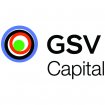
OnHollywood 2013 represents the second time this year that AlwaysOn’s Tony Perkins and I decided to eschew the traditional conference format of many people seated in rows for cabaret-like intimate seating. Sitting in the main room of the beautiful Bel Air Bay Club in subdued lighting with the view of the ocean and a plethora of picture windows made me feel like I was hanging out at the Hotel California (or at least, hanging out in Joe Walsh’s living room, getting ready to hoist a gigantic cocktail or three).
Instead, I was a witness to the ongoing marriage between the Valley and what is euphemistically referred to as Silicon Beach. As a quick aside, given that most of the innovations being realized today are software related, and the nearest geographic example of an inert silicon component ends in an E and is a key part of the Hollywood hardware, can’t we come up with a more original name? How about Media Beach or the Southern Mediasphere… but I digress.
One of the great things about such a setting is that you feel like you can actually meet everyone and share thoughts or ideas&emdash;or at the least exchange cards and interact another day. In fact, I am pretty sure I got to meet darn near everyone who came. This not only included a lot of old friends and the usual allotment of kool companies, but I also got the opportunity to meet some fascinating local people, including the fabulous owner of the Bel Air Bay Club itself.
There were many highlights to share, between the panels and those companies who presented. The variety of media content, engines in which to disperse it, platforms in which to share it, and methods with which to make sense of where it went, is staggering&emdash;both in terms of offerings and also in terms of the great people who are here from all over the world to plant their flag.
That being said, after a week of reflection, the idea that has stayed with me the longest was presented in the last panel. Among the many subjects covered, the idea of there being another bubble coming was discussed&emdash;at worst, one like the Armageddon Internet Bubble of 2005, or at best, one like the small random series of little bubble pops and bursts that have happened ever since. Like most of the folks at the event, I do not buy into that scenario.
Instead, we have built strong, geographically interconnected relationships between companies, such as those Silicon Valley, that are purveying innovative ways to collect and act upon data, and the ad companies centered in New York City and other parts of the country. The panel was composed of CEOs of companies from Northern California and Southern California as well as other parts of the country who are generating revenues and increasing market shares by collaborating and joining forces on all forms of content in all formats to find as many social networking ways in which to share them.
Relationships notwithstanding, I do see a bubble, but not a bubble as we know it&emdash;an intellectual bubble. This bubble is characterized by the dumbing down of content, as producers attempt to address the attention deficit disorder epidemic besetting humanity, while attempting to assuage our human need to be the center of attention. I believe that the end of this cliff is exemplified by Twitter, which allows no more that 140 characters in making a statement and has enjoyed one of most monumental IPOs in history.
It’s frankly hard to believe that you can go with a significantly lower range than 140 characters to get your idea across, and it makes no sense to assume that those points should have a pre-ordained shelf life. But the basis for the Intellectual Bubble is now here. Going over the cliff and hitting the floor is exemplified by Snapchat, a company that provides a platform for sharing content sharing for a maximum of 12 seconds before disappearing. Snapchat recently turned down $3 billion from Facebook, which is trying to remain relevant, and $4 billion by a Chinese consortium that is surely run by the ruling body who wants to make sure that even 12 seconds of thought exchange are controlled by the state.
I have the same perception and respect for the inventors of Snapchat that I do for Justin Bieber&emdash;damned if I can understand the attraction, but totally respect the guts it took to put it out there and congratulations on succeeding. But, when I see the huge number of eyeballs that Snapchat can justifiably point to as engaged, I also understand the implication if the downward spiral in intellectual discourse continues to run unchecked&emdash;a blip that disappears in one second, but is seen by 3 billion eyeballs? Is it truly possible to break down anything, no matter how mundane, into such short bursts without resulting in collateral intellectual damage and ultimately even more indifference to the world and all that is going on that demands actual time, care, and thought to make relevant?
The challenge I lay at the feet of the attendees of OnHollywood 2013 is to provide an intellectual offset. If nature abhors a vacuum, then create content that stimulates a discussion or awareness of an issue, event, or art form and share that content with an underappreciated and underserved market: People who would not only appreciate such content but would in all likelihood be a huge set of eyeballs who control far more money than is currently perceived and who may even be compelled to subscribe to such a quality product. Become a Comcast, with more than a couple of good programs vs. 150 bad ones.
Happily, I have seen such companies at this event and look forward to working with them all. If we cannot stop the downward intellectual slide on one hand, we can surely provide an offset that provides an oasis in a growing intellectual Sahara.
“Thinker” photo by ollyy from Shutterstock.











Reminiscent of the Cultural Wasteland talk of the , what ’70s? The Digital race To The Bottom. It is like name that digital tune. I can in 1,2,3, seconds. Go!!!